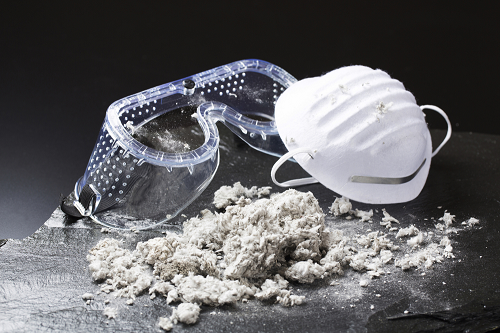Asbestos accounts for about 10,000 deaths in the U.S. each year. Construction workers, firefighters, shipbuilders, mechanics, and custodians are among those at greatest risk for asbestos exposure. However, workers in more than 75 occupations face potential asbestos hazards.
Every worker who may come in contact with asbestos is required by law to get Asbestos Awareness Training to help ensure their safety and health. Basic asbestos awareness must cover in-depth information on the following topics:
1 What is asbestos?
Asbestos is a generic term for six different mineral fibers that naturally occur in rock and soil. In buildings constructed before 1990, asbestos was used in a variety of products, mainly insulation and fireproofing for its heat-resistant and insulating properties. Many products are still made with asbestos, like automobile brakes and clutches, roofing materials, and other construction materials.
Materials that contain more than 1% of asbestos are categorized as either friable or non-friable. Friable means that when it is dry, it can be crumbled, pulverized, or powdered by the human hand. Small fibers and clumps of fibers from friable asbestos can be released into the air as dust. Non-friable asbestos cannot be pulverized under hand pressure. Therefore, inhaling friable asbestos is the main health concern.
2 What are the health risks of asbestos exposure?
When airborne asbestos fibers are inhaled or swallowed, they can become lodged in the soft tissues of the lungs or abdomen. This can trigger asbestos-related illnesses, including mesothelioma, a cancer that destroys the protective tissues around the lungs, abdomen, and heart.
3 What programs are available to protect workers from asbestos exposure?
Asbestos is not banned in the U.S., but it is strictly regulated by the Occupational Safety and Health Administration (OSHA) and the Environmental Protection Agency (EPA). OSHA is responsible for establishing standards to protect workers from asbestos. The EPA regulates environmental exposure to asbestos in school buildings, public and commercial buildings, and in certain asbestos products. The National Institute for Occupational Safety and Health (NIOSH) conducts research and makes recommendations to prevent work-related asbestos injury and illness.
4 What products may contain asbestos?
In the U.S. today, asbestos can only be used in products that have historically contained the mineral. This means no new uses of asbestos are permitted. Some products historically known to contain asbestos are:- floor tiles;
- ceiling tiles;
- asbestos cement;
- wall panels;
- boiler insulation;
- electrical insulation;
- spray-on fireproofing;
- wallboard joint compound;
- wall and attic insulation; and
- asbestos paper and millboard.
5 How do workers recognize asbestos?
Generally, workers cannot tell whether a material contains asbestos by looking at it unless it is labeled. If in doubt, treat the material as if it contains asbestos and leave it alone. There is an increased health risk if asbestos fibers are released, so contact a trained and accredited asbestos professional to take samples if the job requires:
- renovations, which can disturb building materials and distribute asbestos fibers through the air;
- building damage, with crumbling drywall or deteriorating insulation; or
- demolition, which can result in airborne asbestos fibers.
6 How can building owners and managers develop an operations and maintenance (O&M) program?
An O&M program is a plan that covers the training, cleaning, and work practices to manage asbestos-containing materials in buildings. All buildings constructed in or before the early 1980s must have a site-specific O&M plan. It should provide guidelines to:
- keep all building occupants from exposure to asbestos fibers;
- educate workers and maintenance personnel on where asbestos-containing materials are located in the building;
- outline proper safety procedures to follow before performing any maintenance or removal of materials;
- note whether materials are friable or non-friable; and
- prioritize the order of removing asbestos-containing materials.
For more information on the health effects of asbestos exposure see the Agency for Toxic Substances and Disease Registry, the National Institute for Occupational Safety and Health, and the National Cancer Institute.
To schedule Asbestos Awareness Training, contact the Texas Department of Insurance, Division of Workers' Compensation-Workplace Safety at 1-800-252-7031, option 2, www.txsafetyatwork.com, or safetytraining@tdi.texas.gov.

